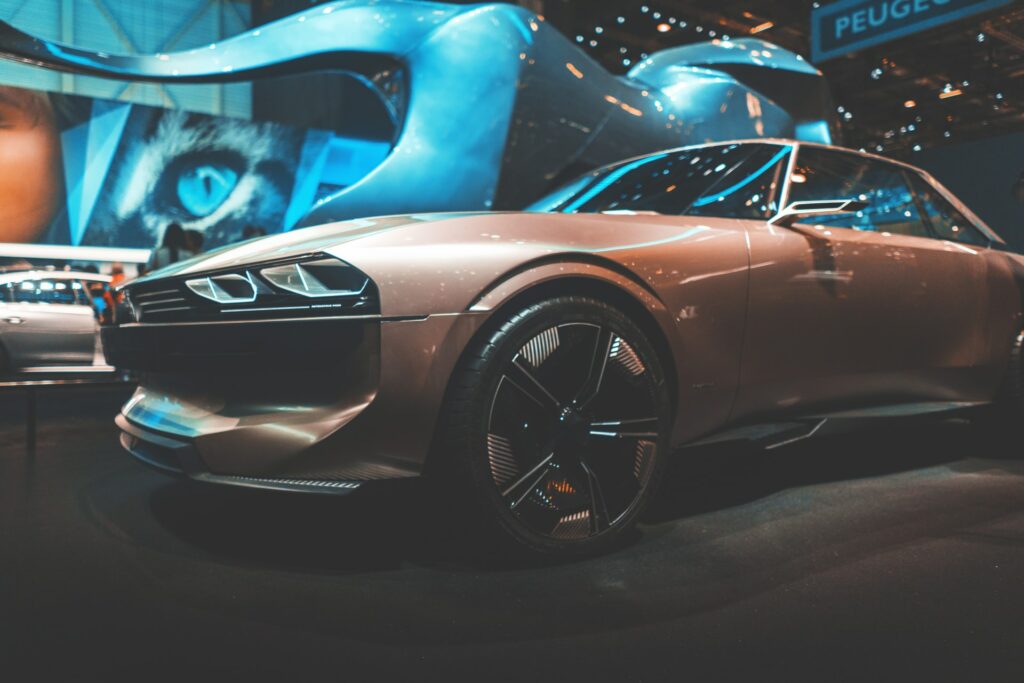We all know electric cars are different from normal cars in many aspects. One such important difference is the EV design, which starts all the way from the front grill to the centre tunnel. Like our traditional cars, Electric vehicles don’t need a front grille for air intake. That itself is a big difference in design which will entirely change the aerodynamics of the car. If we take a look at the new Ford Mustang Mach-E wears a moustache instead of a grill like the traditional Mustang. It’s the same for every EV designed variant of the standard cars. Transitioning a gasoline car to an Electronic Vehicle will lead to many design changes; suddenly, the engine bay was empty, and manufacturers had no clue what to include. Manufacturers started coming with oddly EV designs, which was confusing and strange for them and us.

Manufacturers and EV Designs
The earlier 2010 EV designs were like something that fell from the sky. The EVs at that time stood out in a bad way because of their designs. Purchasing one would be like committing to an odd fashion statement. Manufactures struggled with design confusion, and many elements were not needed in EVs, resulting in more space. In 2012 Tesla started using the Skateboard Chassis, which changed the EV automotive industry for good. In future, it will be all skateboards with different hats, but manufacturers like Hyundai are working hard in designing as they no longer have to focus on the engine.
Now the manufacturers understand that creating a mini spaceship is not the key to EV design success. They are now trying to come up with designs that are not too futuristic nor traditional. The EV industry is in a boom, and many startups are seen entering the market. Most of them have their own designing team but approaches other Electric Vehicle designing companies for their assistance. Design is a crucial aspect of Electronic vehicles. If you dont think there aren’t many differences from our traditional car, here are a few design differences that would open your eyes:
5 EV design differences that makes them different.
Traditional Front Grille
The front grille is and was a part of the traditional internal combustion cars. These engines needed air to cool down the engine. Electric motors also heat up, but it is nowhere near how a gasoline engine heats. These motors also need to cool down but not in the gasoline way with an enormous front grille. The 2010 EVs came with a regular front grille seen on normal cars, which were not functional. The EV motor needs a functional grill that is not as enormous as the traditional grille.
Front Grille is an important designing element of a normal car; BMW’s were known for their grille. With the drop of the grille in EVs, manufacturers kept all their focus on designing it. The traditional Ford Mustang features a front grille for its V8, whereas the EV variant Ford Mustang Mach-E features a black line like a moustache.
Modern Flat Interior
Thanks to Tesla, the Skateboard chassis is famous. They started using this chassis in 2012 on their Model S. From our childhood, and we were traditionally acquainted with the centre tunnel, which runs from the middle of the dashboard to the rear. Manufacturers used to cover them up with hollow plastic. But that changed with front-wheel-drive cars, which didn’t need an axle from the engine to the rear wheels. Still, many cars had tunnels, and the person sitting in the rear middle had to suffer. Unlike gasoline cars, EVs have only one moving part, their motor. There was no need for a shaft or an axle, and with the skateboard chassis, the EVs no longer had a hump in the middle.
Aerodynamic Body
We know that many normal gasoline cars have their Electric variant. The throaty V6 or V8 were replaced by silent electric motors. Suddenly the engine bay was empty, and the manufacturers realized that they didn’t need regular engine bays (front engine). The internal combustion engines featured a long and bulky front. This was not the same in the case of EVs. Manufacturers started creating different and unique aerodynamic EV designs. The hood doesn’t have to be long and bulky for an EV, and It can be slim, slanting, and aerodynamic.
Frunk (by Tesla)
For mid and back engine gasoline cars, the concept of frunk was not new. But Ford, with their new F-150 Lightning, revolutionized the front trunk, it was a huge truck with frunk. Manufacturers are utilizing this space to contain more luggage, and some reducing it to increase the aerodynamics and internal space of the car. That is one of the hard decisions to make.
Futuristic Interiors
With lesser moving parts and Skateboard chassis, there is more than enough space to play within the interior designs of the car. Manufacturers using flat batteries can maintain a smooth flow among the interiors without any humps. All this resulted in more spacious interiors. Interior design is crucial and has to be done with care; if one element stays out of place, the whole interior EV design will become a flop.
Conclusion
Those were the major EV design changes that make them different from a manual car. EV Designing is not as same as designing a manual car. Many components that are there in a manual car won’t be there in an EV. The design has to compensate for all the missing parts; if there is no front grille, something must be there to fill that gap. If you have any further doubts or want to know about the cost of designing, please feel free to contact us.
